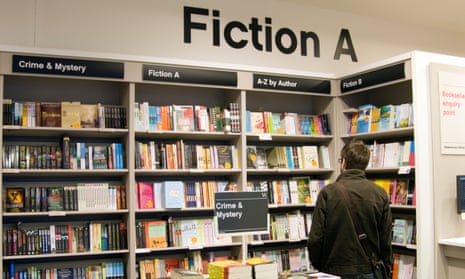When reviewers first saw Keira Drake’s The Continent, this story of a teenager trapped by a war between two “native” tribes quickly found attention on social media – though not much of it was good. This young adult novel was attacked for its “white saviour narrative” and its stereotypical portrayal of people with “reddish-brown skin” or “almond-shaped eyes”. The author Justina Ireland called it a “racist garbage fire”.
Drake apologised, said she would “address concerns about the novel”, and delayed the release. Her publisher, Harlequin Teen, sent the book out to two “sensitivity readers”, who vetted the manuscript for stereotypes, biases and problematic language. Armed with a list of potential problems and possible solutions, Drake went back to the drawing board.It’s a story that has become all too familiar in recent years as publishers and writers struggle to adapt to a new world where cultural appropriation and racial stereotyping are called out online, and where campaigns such as We Need Diverse Books push for a corrective to the lack of books featuring people of colour (POC).
While some sensitivity readers charge by the hour, fees start at about $250 (£180) a manuscript. Demand is clearly high: a search on Twitter finds dozens of authors over the last few days alone looking for the service. “I am in need of a black Muslim sensitivity reader ASAP,” says one writer. “I’m seeking Japanese and Japanese-American sensitivity readers,” says another.
Anna Hecker, whose young adult novel When the Beat Drops is published in May, says she first contacted sensitivity readers after two rounds of edits with her publisher. Her protagonist, Mira, is mixed-race – half Caucasian, half African-American – and Hecker is not.
She hired three sensitivity readers, who all gave feedback. Hecker did not describe race in her initial draft, something she was told was typical for white writers. As a person of colour, it was suggested that Mira would make note of white characters’ ethnicities, in the way a white character would make note of black or Latino characters. One reader queried how Mira’s white mother learned how to braid her daughter’s mixed-race hair. Another encouraged Hecker to be more creative with descriptions, saying her initial description of “light brown skin, a wide nose, and kinky dark hair” was both cliched and boring – feedback Hecker described as “fair”.
“I welcomed the opportunity to dig into my creative reserves while still being mindful of hurtful tropes and cliches, such as describing POC hair and skin in terms of food,” says Hecker. “I also feel like these enhanced descriptions made my characters more nuanced and complex. It’s stuff that’s honestly hard to even conceptualise if you haven’t lived it. I think that’s the real value in hiring a sensitivity reader — they have the lived experience, so they can offer perspective on often-overlooked details.”
According to Debbie Reese, an academic who focuses on the representation of Native Americans in children’s books, many authors aren’t as receptive as Hecker. Reese dabbled in being a sensitivity reader in 2016, charging $100 an hour, but stopped.
“I quit doing them because they were exhausting and sometimes authors wanted to argue with me,” she says. “They weren’t open to the feedback. They weren’t trying to understand the feedback. They were insisting on the rightness of what they were writing.”
Sometimes, she’d find herself highlighting problematic words or phrases such as “low man on the totem pole” – a term which is sometimes used to describe people with little status. “I’d say that was a misrepresentation of an item originating with a specific nation. That hierarchy isn’t applicable. The phrase is used a lot but it is what generally gets called ‘a micro-aggression’.”

Dhonielle Clayton became a sensitivity reader while she was working for her creative writing degree, at first reading manuscripts for her friends and then more widely. She describes it as “a targeted editorial read – just for the black American experience”.
“I highlight everything from micro – word choices and phrases – to bigger meta-narrative and structure elements,” she says. “I point out issues and give ideas for changes.”
Clayton, the author of the well-received young adult novel The Belles, has been praised by writers such as Jodi Picoult, who publicly thanked her “not just for helping out writers who look like me, but for contributing beautifully to literature with your own work”. Picoult used sensitivity readers for her 2016 novel about a black nurse who looks after the baby of white supremacists, Small Great Things.
But the rise of sensitivity readers has drawn fire elsewhere: Francine Prose asked in the New York Review of Books if we should “dismiss Madame Bovary because Flaubert lacked ‘lived experience’ of what it meant to be a restless provincial housewife”, or if we can “no longer read Othello because Shakespeare wasn’t black”. The author Lionel Shriver believes there is “a thin line between combing through manuscripts for anything potentially objectionable to particular subgroups and overt political censorship”.
“Is it any longer acceptable for characters to be bigoted? Can a character in your novel vote for Brexit?” Shriver wrote in the Guardian, adding: “The day my novels are sent to a sensitivity reader is the day I quit.”
Sensitivity readers say this argument credits them with too much power. They are merely offering their perspective to a writer and their editor – they have no veto. “So many people have this kneejerk reaction and call ‘censorship’,” Hecker says. “Sensitivity readers are the opposite of censorship. Censorship would be saying: ‘You can’t write this character, you can’t say this thing this way.’ That’s not what they do. They don’t say: ‘You can’t say this.’ They are much more likely to say: ‘Have you thought of it this way? Have you researched this? Are you aware that saying something this way is a trope or cliche?’”
Hecker thinks it is important for writers “to ask why you want to write a specific character or tell a specific story, and if you’re really the best person to do that”.
“In my case, I had to ask myself if I was the best person to write a scene where a young woman of colour is being questioned by a cop,” she says, “and I had to admit that, given my experience and the culture I live in and the vast number of other writers who could write that scene authentically, I was not the best person for that job. It was humbling.”
Despite the fears of the likes of Shriver, both Clayton and Reese say authors should be able to write from perspectives which are not their own. “We should all be able to write what we want, create what we want. That’s not the issue,” says Clayton. For her, that comes when authors who are “writing cross-culturally” take up slots in a publisher’s list that could have been more diverse: “When our various manuscripts enter the publishing gauntlet, the system, that’s when we see institutional racism, bigotry, homophobia and ableism at work.”
Sensitivity readers can be another way for publishers to privilege one group, enabling them to write about all the other groups, Clayton continues. “That’s the real censorship versus me, as a sensitivity reader, pointing out that a writer has not accurately presented something.”Publishers can also use sensitivity readers to give themselves a free pass, Reese says, to sell a book as having got the all-clear, even if it still contains stereotypes. Last year, Laura Moriarty’s dystopian novel American Heart, set in a world where Muslims are sent to internment camps, was savaged by readers for what they called a “white saviour narrative”; her publisher HarperTeen subsequently revealed it had employed two Muslim sensitivity readers to vet it.
“They are using them as shields,” says Reese. “The writers are doing it and so are their publishers and editors. What they are not saying is that a sensitivity reader might have said ‘do not do this’. Instead, they can say, honestly, that a sensitivity reader worked with them. They don’t have to mention that the sensitivity reader said ‘stop’.”
After six months of revisions, Drake’s The Continent came out – again – in March. There are changes to the appearances of her tribes, and her central character is now of mixed racial heritage. The author told Vulture that her sensitivity readers “loved” the changes. However, one of Drake’s readers claimed to Vulture that she had suggested an “extensive” rewrite to her editor, who had been “reluctant to pass them along”. Drake had already been “through the wringer”, the editor said – another revision would be too much work.
